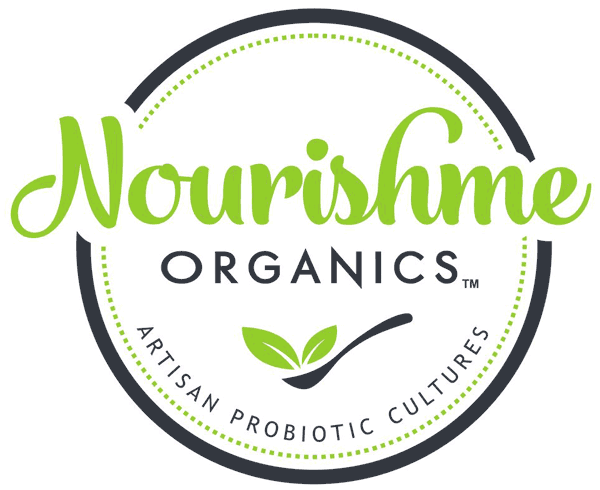-
Shop
- Start Here
- Best Sellers
- What's New
- Brands
- Activated Probiotics
- Bioclinic Naturals
- Biogaia
- BiotiQuest
- Bodybio
- Cellcore
- FIQ
- Flordis
- Gelpro
- Kefirko
- Low D
- Masontops
- MedLab
- Melbourne Hot Sauce
- Metabolic Maintenance
- Microbiome Labs
- Mito Wellness
- Mother Dirt
- Nourishme Organics
- Preventa
- Provenir
- Pure Encapsulations
- Qenda
- Quicksilver Scientific
- Researched Nutritionals
- Thorne
- VSL3
- Vivomixx
- Bundles
- Allergic Rhinitis
- Anti-Ageing
- Australian Made
- Beauty
- Biohacking
- Bone Broth
- Books
- Candida
- Cheese
- Children
- Cleaning
- Collagen
- Colostrum
- Constipation
- Detox
- Deuterium Depleted Water
- Diarrhea
- Dietary Fibre
- Digestive Enzymes
- Dysbiosis
- Erectile Dysfunction
- Fat Loss
- Fermentation
- Fermented Vegetable
- Fine Foods
- Garden
- Gift Cards
- Gut Health
- Hair Loss
- Heavy Metals
- H pylori
- IBS/ IBD
- Immune Health
- Kefir
- Kombucha
- Leaky Gut
- Low FODMAP
- Medicinal Mushrooms
- Menopause
- Mental Health
- Microbiome Consultation
- Miso, Koji, Natto
- Mitochondrial Health
- Mould
- Multivitamins
- Oral Health
- Organic
- Paleo/ Carnivore
- Pantry
- Parasites
- Pet Health
- Postbiotics
- Prebiotics
- Prepping
- Probiotics
- Red Light Therapy
- Reflux
- Rheumatoid Arthritis
- Root Cause Protocol
- Second Fermentation
- SIBO
- Skin Care
- Sleep
- Sourdough
- Sports Nutrition
- Sprouting
- Stress
- Supplements
- Tempeh
- Testosterone
- Toilet Stool
- Travel
- Vegan
- Weight Loss
- Yoghurt
- Zeolite
-
Shop
- Shop All
- Start Here
- Best Sellers
- By Product
- Australian Made
- Books
- Carnivore
- Cheese
- Collagen
- Colostrum
- Detox
- Deuterium Depleted Water
- Digestive Enzymes
- Fermentation Accessories
- Fermented Vegetables
- Fine Foods
- Gift Cards
- Gut Health Supplements
- Kefir
- Kombucha
- L reuteri
- Mushrooms
- Miso, Koji, Natto
- Multivitamins
- Natural Extracts
- Postbiotics
- Prebiotics
- Probiotics
- Second Fermentation
- Sourdough
- Sports Nutrition
- Sprouting
- Starter Cultures
- Supplements
- Tempeh
- Yoghurt
- Zeolite
- By Brands
- Home & Beauty
-
Learn
- Videos
- Recipes
- Support Group
- Beginners Start Here
- Fermentation Workshop
- Ultimate Guides Series
- Second Fermentation
- How to Make:
- Milk Kefir
- Water Kefir
- Coconut Milk Kefir
- Coconut Water Kefir
- Almond Milk Kefir
- Kombucha
- Jun Kombucha
- Viili
- Filmjolk
- Second Fermentation
- Dried Milk Kefir Grains
- Dried Water Kefir Grains
- Koji Rice
- White Miso
- Tempeh
- Probiotic Yoghurt
- Fermented Vegetable
- Vegan Coconut Yogurt
- Sprouts
- Natto
- Sourdough Levain
- Apple Cider Vinegar
- Sour Cream
- Fermented Buttermilk
- L reuteri Yoghurt
- What is Kefir
- What is Kombucha
- DDW Dilution Calculator
- Reviews
- About us
- Blog
- Podcast
- Contact Us
-19%




Organic Nutrigenomic Broccoli Sprouting Seeds 100g
$24.66 AUD $19.98 AUD
BROCCOLI (BRASSICA OLERACEA) SPROUTING SEEDS Broccoli sprouts look a lot like alfalfa sprouts but are more akin to radish. They are a great source of antioxidants and are powerfully anti-carcinogenic. A beautiful...
Read More
or make 4 interest-free payments of
$5.00 AUD fortnightly with
 More info
More info
Description
BROCCOLI (BRASSICA OLERACEA) SPROUTING SEEDS
Broccoli sprouts look a lot like alfalfa sprouts but are more akin to radish. They are a great source of antioxidants and are powerfully anti-carcinogenic. A beautiful violet, these sprouts look and taste great in salads, as a garnish, or on their own. Broccoli sprouts can be sprouted in any of our spouters but we recommend our Masontops bean screens. Check out our bean screens
Health benefits
- Loaded with a substance called sulforaphane, helping the body to combat and prevent cancer.
- An anti-inflammatory, broccoli sprouts have been of use in the treatment of asthma. Sulforaphane again the active ingredient, this time reducing the inflammation associated with asthma and other bronchial issues.
- Sprouted broccoli has proven effective in the treatment of peptic ulcers.
- High in the vitamins A, C, K and folate.
- A good source of dietary fibre, aiding in detoxification of the colon and digestive tract and preventing constipation.
- Rich in manganese, helping to combat free radicals.
- Regulates cholesterol in the blood, promoting cardiovascular health and well being.
The importance of Sulforaphane:
The research on sulforaphane is fast emerging, with more than 1000 peer-reviewed papers on the subject. The most significant aspect of sulforaphane is its Nutrigenomic properties. Sulforaphane has been shown to influence around 200 genes related to human immune function. This is the reason sulforaphane can be beneficial to overall health and well being by improving our defences against illness. Sulforaphane is highly bioavailable and can be readily absorbed in the body.
Country of Origin: Australian Grown
Directions
Sprouts will be ready in around 7 to 10 days. To sprout, add 1 tablespoon of seeds to a sprouting jar. Soak with 250ml of water overnight and drain. Rinse with water, 3 to 4 times per day. Spread evenly and store on a benchtop until sprouting is complete. Store sprouts in a refrigerator.
Serving Suggestions
Add to your favourite salads, smoothies or juice.
Research
Lee J-M, Johnson JA. An Important Role of Nrf2-ARE Pathway in the Cellular Defense Mechanism Journal of Biochemistry and Molecular Biology 2004 ; 37(2):139-143
Fahey JW, Talalay P. Antioxidant Functions of Sulforaphane: a Potent Inducer of Phase II Detoxication Enzymes. Food and Chemical Toxicology. 1999; 37:973-979
Innmorato NG et al. The Transcription Factor Nrf2 Is a Therapeutic Target against Brain Inflammation. The Journal of Immunology 2008;181:680 – 689.
Cramer J, Jeffery EH. Sulforaphane Absorption and Excretion Following Ingestion of a Semi-Purified Broccoli Powder Rich in Glucoraphanin and Broccoli Sprouts in Healthy Men.2011; Nutrition and Cancer, 63(2), 196–201
Halliwell B Free radicals and antioxidants – quo vadis? Trends in Pharmacological Sciences2011: 32(3):125-130.
Kensler TW et al. Translational Strategies for cancer prevention in liver. Nature Reviews Cancer 3, 321-329 (May 2003)
2001 Steinkellner H et al. Effects of cruciferous vegetables and their constituents on drug metabolizing enzymes involved in the bioactivation of DNA-reactive dietary carcinogens. Mutation Research 480–481 (2001) 285–297.
Shipping & Delivery
We offer free shipping for Australia and New Zealand orders over $250. International shipping also available.
Click here for more information on shipping and delivery
Click here for more information on shipping and delivery
















